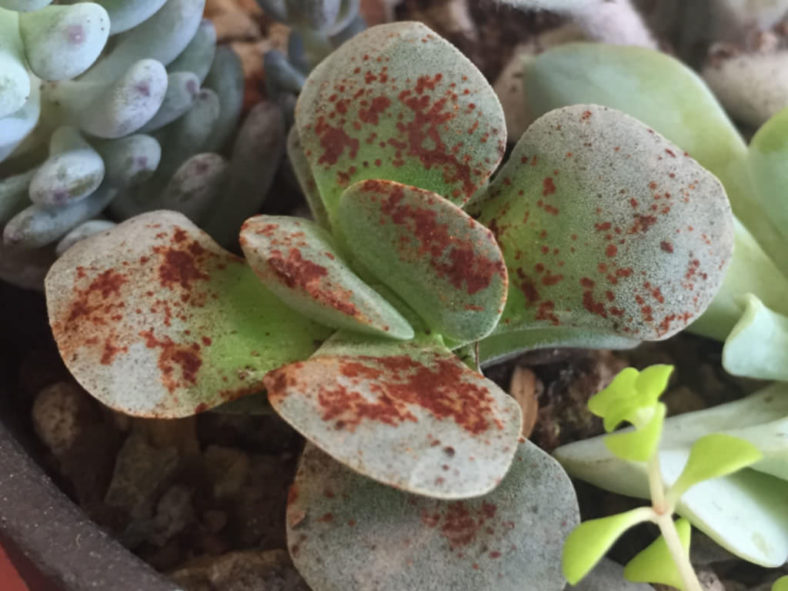Succulents thrive in diverse habitats worldwide and can also be cultivated as houseplants. They use their fleshy parts as a water reservoir during droughts. However, these parts are also susceptible to diseases and disorders that cause them to discolor with brown spots.
Edema
Although the leaves are thick, fleshy, and water-filled, this does not mean you need to water your succulents more than other plants. The reverse is true. Succulents perform best when their soil dries between waterings. If they remain in wet or waterlogged soils, succulents suffer from edema, which causes brown, corky spots on the leaves. Sometimes the spots form on the undersides of leaves, making it more difficult to notice this disorder. The brown spots are particularly noticeable in the white areas of variegated succulents.
Dissolved Salts and Chemicals
Succulents are sensitive to excessive fertilizer and typically require infrequent or diluted fertilizer applications. If you give your succulent plants too much fertilizer, the salts in the fertilizer accumulate in the soil and can burn the roots. As the saline soil solution moves upward in succulents, it may burn the leaves and cause brown spots.

Fungal Diseases
Succulents are susceptible to a host of fungal leaf-spot diseases. These pathogenic fungi require water to reproduce sexually and spread, so they proliferate in moist areas and foggy climates. As a fungus takes hold of a plant, it may form brown spots on leaves that eventually join to form large lesions. Unfortunately, once the disease is present, there is no cure.
Prevention
Preventing brown spots on succulent leaves is often as simple as choosing an appropriate planting or potting soil and watering the plants properly. Porous, well-draining soil is best. If you grow succulents in containers, use only pots with drainage holes so water can drain away. Water plants thoroughly until the excess water runs out of the drainage holes, which helps flush excess salts.
Source: sfgate.com
Links
- Succupedia: Browse succulents by Scientific Name, Common Name, Genus, Family, USDA Hardiness Zone, Origin, or cacti by Genus